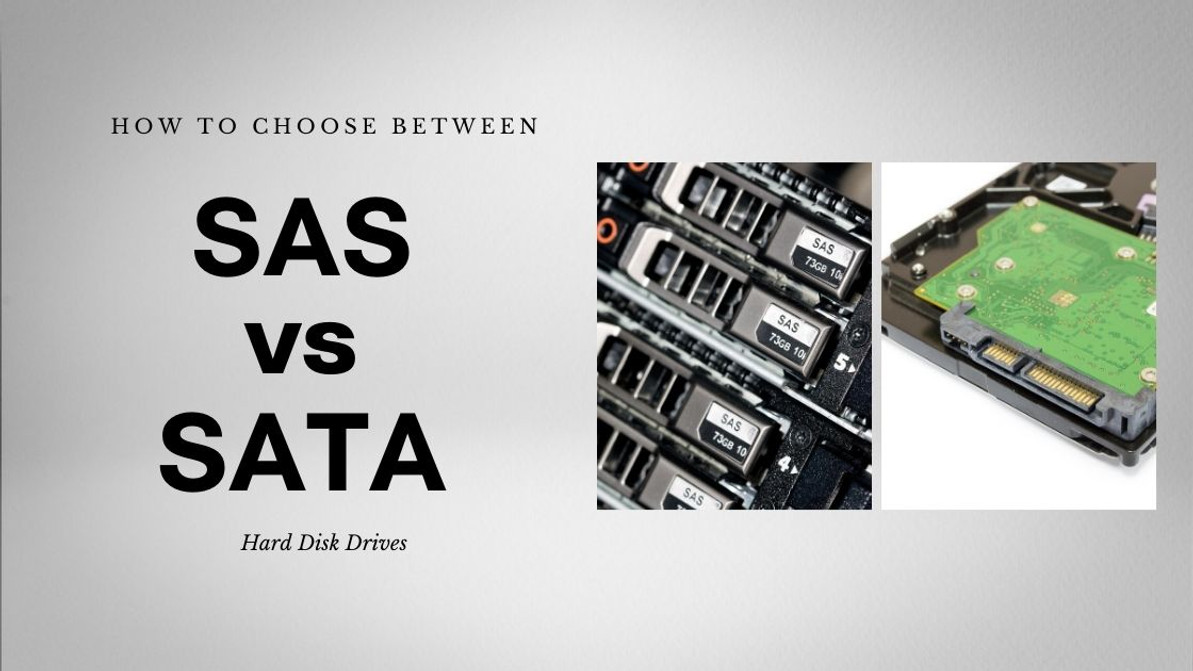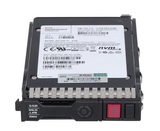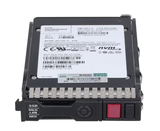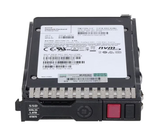How To Choose Between SAS vs SATA HDDs?
With a bulk of hard drive products today, choosing the right one for your computer or your server can be taunting. Hence, if you are on your way to purchasing a hard drive, it is best to learn more about the basics of HDD plugs and cables that potentially make the difference.
Hard drives or HDD are unmistakably one of the most valuable components of your computer. It stores files, programs, and other essential data that keep your computer living up to its functions.
While the many types of HDD storage devices typically serve the same purpose and adopt the same technology, their respective connectors come in different varieties. These connectors are used to attach the HDD or media drives to the motherboard.
SAS and SATA hard drive data cables used to transfer data to hard drives and vice versa. In the market, you can observe that a number of hard drives are classified as SAS HDD or SATA HDD which refers to the type of interface the HDD uses.
SATA is short for Serial Advanced Technology Attachment while SAS (pronounced as “scuzzy”) stands for Serial Attached Small Computer System Interface.
But what exactly is the difference between the two and which one can directly cater to your needs and standards?
Read on to find out.
In the process of figuring out on which of the SAS HDD or SATA HDD suits your needs best, let us compare how they perform in the following criteria: speed, reliability, capacity, data cable, application, and cost,
Reliability of SAS vs SATA HDDs
There are plenty of references and reviews suggesting reliability as the primary difference between the SAS HDD and SATA HDD. Reliability is generally determined through the hard drive’s mean time between failures (MTBF) that typically fall between 100,000 to 1,000,000 hours. The higher the MTBF, the more reliable the hard drive is.
SAS HDD has an average of 1.2 to 1.6 million hours MTBF at 45oC compared to SATA HDD’s 700,000 to 1.2 million hours at 24oC. Hence, SAS HDD tops SATA HDD in terms of reliability.
Capacity of SAS vs SATA HDDs
This criterion is another important consideration as it holds the bar to the amount of storage you can keep in your chosen HDD.
SATA HDD is known to have a bigger capacity compared to SAS HDD. SATA reaches up to 10TB in terms of storage capacity while SAS has an average maximum of 900 GB. Thereby SATA has a larger storage capacity compares to SAS.
Speed Difference
The spin speed which is measured by rotations per minute (RPM) determines how fast the computer can locate a particular set of data. Naturally, the higher the RPM the faster the HDD. This greatly contributes to the hard drive’s transfer rate.
In the same way, IOPS or inputs outputs per second described as the amount of data that can be written or read from the drive is also vital especially during intensive workloads and generally determines its storage performance.
In terms of speed, SAS HDD holds the record for faster data transfer rates with higher spin rates compared to SATA HDD. Both types of hard drives can actually transfer up to 6 Gb/s, SAS HDD comes with 7200 RPM, 10000 RPM, to 15000 RPM in terms of spin speed while SATA HDD spins at 5400 or 7200 RPM.
Data Cables Needed
The physical form of the cable is also a notable difference between SAS HDD and SATA HDD.
With SAS, the length of the cable can be up to 33 feet long. The power and data run through one cable connection. On the other hand, SATA has about 3 feet long narrow cable split into two connections in which the power and data transfer occur separately.
Application of SAS Vs SATA HDDs
As promising as the advantage and as disappointing as the disadvantages of SAS and SATA HDDs may be in terms of the aforementioned criteria, it all boils down on how exactly are you going to use the HDD. You may be contemplating buying a SAS HDD when in fact you can do away with a SATA HDD.
Basically, if you are looking for an HDD for storage, backups, and personal computing, you can choose the SATA HDD. In fact, SATA is usually found in the motherboard of desktop computers and laptops. For consumer use, capacity is an important factor as data storage is usually a common demand in personal computers.
If you are planning to buy an HDD that corresponds to the intensive demands of your business operations, then the SAS HDD is for you. SAS hard drives are commonly used in enterprise and servers. Reliability and high speed are considered non-negotiables especially in performing E-commerce tasks. These are basically two criteria that SAS HDD is known for.
Cost between SAS and SATA HDDs
Evidently, the price of SAS and SATA HDDs also correspond to their common use.
SATA HDD is cheaper compared to SAS HDD. Since the hardware of SATA HDD is relatively simpler and is typically used by single users as opposed to it SAS counterpart, you can expect that it is less expensive.
The Bottom Line
SAS vs. SATA has long been subjected to debate.
If you are a consumer who is not exactly a technology-savvy, at some point it becomes confusing. So how should you choose between a SAS HDD and a SATA HDD?
Simple, go back on how you are going to use the HDD as both are built differently for a reason. For personal purposes, you can lean towards SATA HDD. But if you are looking for a hard drive that will make your enterprise operation smooth and functioning in real-time, go and purchase a SAS HDD.
Recent Posts
-
HPE 1.6TB NVMe U.3 PCIe SSD: Unleashing Turbo-Charged Performance for ProLiant Gen10 Powerhouses
HPE 1.6TB 2.5-inch Small Form Factor Digitally Signed Firmware NVMe U.3 PCIe High Performance SCN Mi …Apr 17th 2025 -
HPE 1.6TB NVMe U.3 PCIe SSD: Powering ProLiant Gen10 Plus Servers with High Performance and Security
HPE 1.6TB 2.5-Inch SFF NVMe U.3 PCIe Mixed Use SSD for ProLiant Gen10 Plus Servers Introduction …Apr 16th 2025 -
Igniting High-Performance Storage for ProLiant Gen9 & Gen10 Servers: HPE 1.6TB NVMe U.2 SSD
HPE 1.6TB NVMe U.2 SSD: The Turbocharged Heartbeat of ProLiant Performance The HPE 1.6TB 2.5-in …Apr 15th 2025




